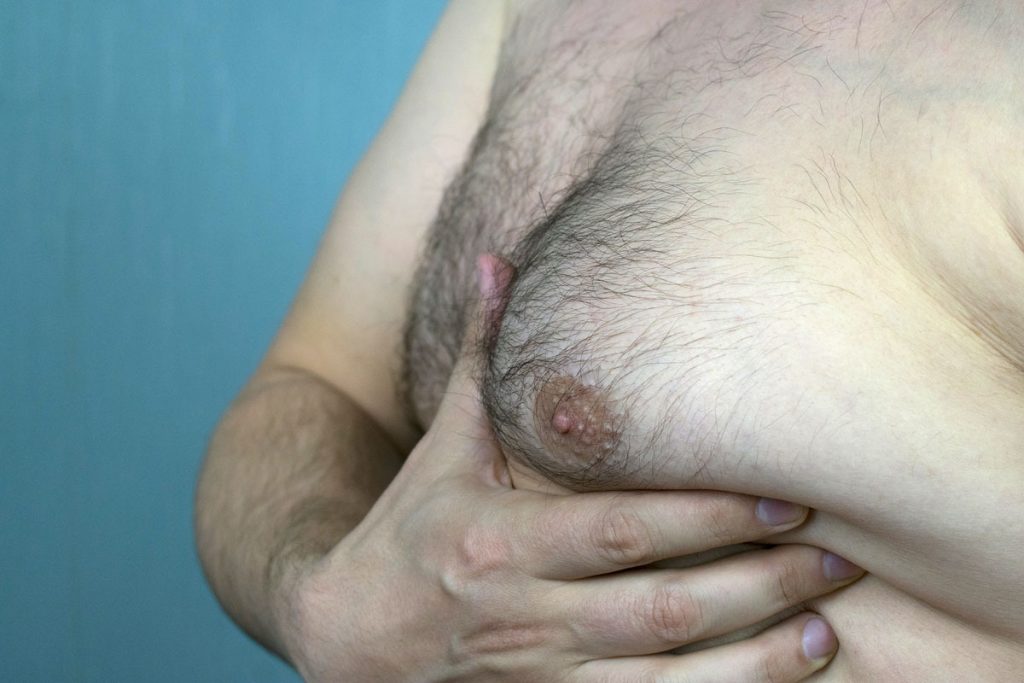Non-surgical fat reduction has become an increasingly popular option—and our New Jersey CoolSculpting® patients will happily tell you how much they love seeing results without downtime. While we love being able to provide our patients with non-invasive solutions to some of their biggest concerns, there are limitations to what many non-surgical treatments can do compared to their surgical counterparts.
Traditionally, Dr. Parker has found that men suffering with gynecomastia, a common condition where male breast tissue is overdeveloped, respond best to a combination of liposuction and surgical excision of excess tissue and skin—but what if our favorite non-surgical fat reduction treatment could provide a male breast reduction alternative?
That’s what a recent split-body study set out to determine.
Gynecomastia vs. pseudogynecomastia
Before we get into the details of the study, it’s important to explain the varying degrees of gynecomastia. In severe cases, men have developed an excess of glandular breast tissue, similar to a woman’s breast. It’s difficult to address this type of tissue with traditional fat removal methods like liposuction because it is dense and nodular.
On the other hand, there’s pseudogynecomastia, an excess of fatty tissue on the chest that causes the appearance of male breasts.
But the truth is most men don’t fall neatly into one of these categories: most patients seeking a male breast reduction have a combination of excess glandular tissue and excess fat. This is why Dr. Parker typically uses both fat removal and tissue excision to get optimal results.
So, how does CoolSculpting compare to surgical gynecomastia treatment?
Researchers evaluated 10 men with pseudogynecomastia to determine if non-surgical fat reduction through cryolipolysis (CoolSculpting) is a safe, effective option. Remember, they were testing to see if fatty tissue only on the chest could be treated with CoolSculpting to provide a nice looking result.
After two CoolSculpting cycles spaced six weeks apart, the seven participants who completed the study saw noticeable reduction in fatty tissue thickness in the chest area treated with CoolSculpting compared to the untreated side of the chest. The authors of the study also reported that “adverse events were mild and transient”—CoolSculpting did appear to be both safe and effective for reducing male chest fat in moderate amounts.
Our thoughts? As of now, only a select few patients would appear to be good candidates for this type of treatment (which is not yet FDA cleared for the chest)—and male breast reduction surgery remains the favorable option for a number of reasons:
- Both fat and glandular tissue can be removed in predetermined amounts with surgery. CoolSculpting only reduces fat, and we don’t have precise control over exactly how much reduction takes place.
- Using liposuction, a skilled plastic surgeon can sculpt the chest to improve shape. CoolSculpting might reduce bulk, but can’t be used to for precise shaping.
- Surgical treatment can be effective for nearly any degree of gynecomastia. CoolSculpting would be best suited to mild cases of pseudogynecomastia.
- Male breast reduction surgery scars are usually very tiny, recovery is short, and results are nearly final in about 3 months. Most patients find a few days of downtime well worth the dramatic improvements possible, and CoolSculpting offers no benefit over male breast reduction in terms of time from treatment to full results.
In sum, CoolSculpting is a fantastic option for reducing fat pockets in numerous other areas of the body, but not the best option to address the more complex nature of gynecomastia.
Concerned about gynecomastia? We can help.
While we’re probably still years away from treating gynecomastia with something like CoolSculpting, you don’t have to wait to achieve a more masculine chest contour. Finding the right treatment requires a consultation with a board certified plastic surgeon, who can evaluate your concerns and recommend the approach that will best meet your needs.
New Jersey plastic surgeon Dr. Parker is experienced in a variety of safe, effective and long-lasting options to treat gynecomastia, including the quicker-recovery SAFE Lipo and VASER Ultrasonic Liposuction and virtually “scarless” incision techniques. To schedule your consultation, call 201-967-1212 or contact us online anytime.

Leave a Reply